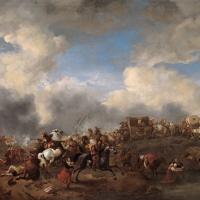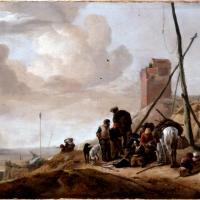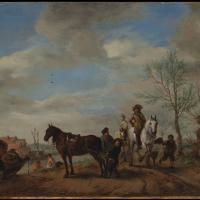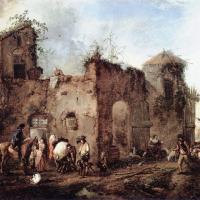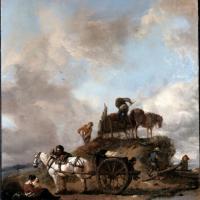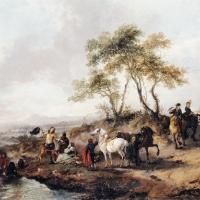Philips Wouwerman
A Cavalry Battle
$450.00
A Coastal Scene
$450.00
Philips Wouwerman
Philips Wouwerman (1619-1668)
Philips Wouwerman ( Haarlem , 1619 - Haarlem , 19 of maypole of 1668 ) was a painter Dutch specialized in paintings of battles, hunts and landscapes. His main skill was painting horses , so he preferred subjects that would allow them to be included.
He started painting with his father, Paul Joosten Wouwerman, a painter of rather modest historical subjects. He also learned with Frans Hals according to some review of the time, although his paintings do not reveal Hals influences.
Wouwerman became a member of the Guild of San Lucas in 1642 and undertook a prolific and commercially successful career. The expert John Smith elaborated in 1829-42 a reasoned catalog of this painter, who collected some 800 works. Subsequently, the expert Hofstede de Groot produced another Wouwerman catalog that collected more than 1,200. However, the most recent study of this painter, due to Birgit Schumacher (2006), restricts the number of authentic paintings to about 560 and considers that the others were created by two younger brothers of the master, Pieter (1623-1682) and Jan Pauwelsz . Wouwerman (1629-1666), as well as imitators of various European countries.
The safe works of Philips Wouwerman, of great vitality and careful finish, are very varied although they belong to a few themes, mostly equestrian: hunting, battles, military camps, landscapes with travelers ...
Three periods can be distinguished in Wouwerman's career, due to variations in his style. His early works betray the influence of Pieter van Laer , " Bamboccio ", for its earthy color and angular design. Those of its middle age are very refined and bright in color, with a more silvery range, and their latest works are rather overloaded with figures and somewhat dull in color, although they maintain a certain vigor.
Wouwerman is part of the extensive payroll of Dutch and Flemish painters of the seventeenth century (" minor teachers ") that produced massively for the open market, generally reduced formats and without thematic complexities. Unlike Rembrandt , Frans Hals and Rubens , who used to work on demand, " junior teachers " such as Wouwerman sold their works in markets and through intermediaries, so they specialized in one genre until they gained a reputation and a demand from the clientele , generally bourgeois.
The paintings of Wouwerman, of great success in his time, gained greater esteem in the eighteenth century, especially in the courts of Louis XVI of France and Charles IV of Spain . There are examples of this artist in almost all European museums of real or aristocratic origin. In Spain, both the Prado Museum and the Thyssen-Bornemisza Museum have paintings by Wouwerman.


